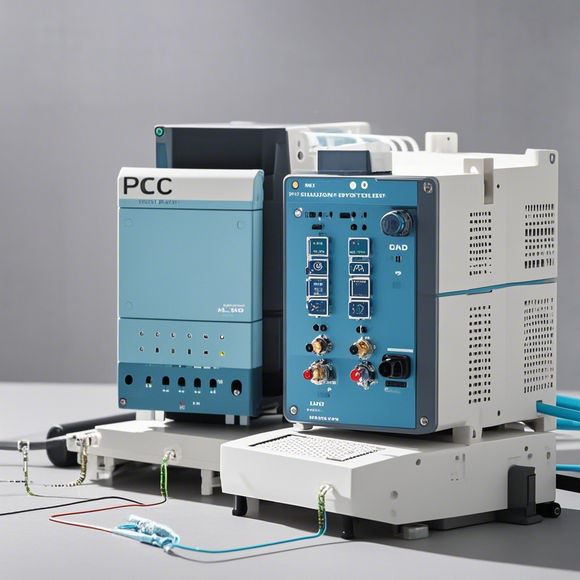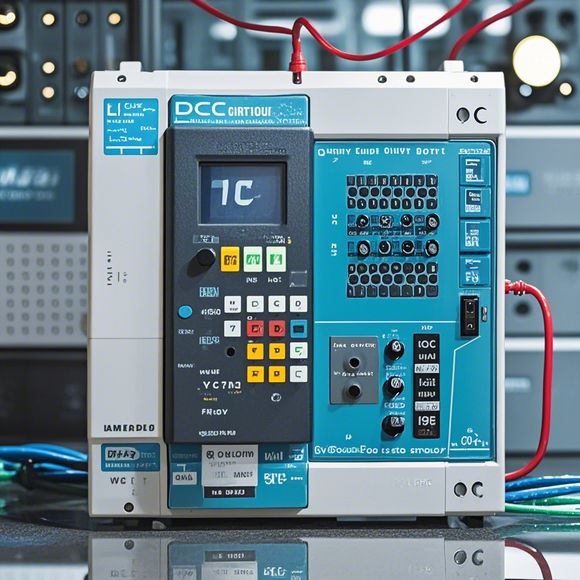PLC (Programmable Logic Controller) Control System Principle and Practical Applications
A Programmable Logic Controller (PLC) is a digital system that can be programmed to perform a wide range of control functions. It consists of a central processing unit, memory and input/output interfaces. The central processing unit receives commands from the operator, interprets them and sends out signals to the various components of the PLC. These include motors, sensors, switches and other devices.The key advantage of using a PLC for industrial automation is its flexibility and efficiency. With just a few keystrokes, operators can change the settings of the system without having to physically modify the hardware. This saves time and reduces the risk of human error.In addition, PLC systems can be customized to meet specific needs of a particular application. They can handle a wide variety of tasks such as temperature control, lighting regulation, process monitoring, safety features, and even communication with other devices.Overall, PLCs are an important component of modern industrial control systems, providing reliable and efficient operation while also allowing for customization and flexibility.
In the world of industrial automation, the Programmable Logic Controller (PLC) is often considered as the backbone of many complex manufacturing and industrial processes. The ability to manage a multitude of interconnected devices, sensors, and actuators with a single centralized control system is what sets PLC systems apart from more traditional manual control methods. This guide will provide you with an in-depth understanding of the basic principles behind PLC systems, their applications, and some practical tips for integrating them into your business operations.
The heart of a PLC system lies in its programming capabilities. Unlike most other types of computers, which require users to manually input commands, PLCs are programmed to execute specific sequences of instructions directly from stored program code. This means that you can create custom logic for your system without having to rely on human error. The key components of a typical PLC include the CPU (Central Processing Unit), memory for holding data and program code, input/output interfaces for connecting various hardware devices, and a display for monitoring the status of the system.
One of the most significant benefits of using PLCs in industrial applications is their flexibility. Because they operate based on program code, you can easily modify or update the logic of your system without having to physically reprogram the hardware. This makes it easier to adapt to changing needs or unexpected situations, ensuring that your system remains efficient throughout its operational lifecycle. Additionally, PLCs can be programmed to work seamlessly with other systems, such as HMI (Human Machine Interface) displays or other automation devices, further enhancing the overall performance of your production line.
When it comes to choosing a PLC, there are several factors to consider. First and foremost, you need to determine the level of complexity you need for your application. Some PLCs are designed specifically for high-speed and real-time processing while others are more suited for lower-volume applications requiring less frequent updates. Additionally, you should consider your budget and any potential future expansions in terms of the size of the system and its capacity for additional hardware integration.

Once you have identified the right PLC, the next step is to install and configure it according to your specific needs. Here are some important considerations to keep in mind when configuring a PLC system.
First and foremost, you need to ensure that your PLC has sufficient power supply and support for all the necessary peripherals, including I/O modules and communication interfaces like Ethernet or RS-232. Additionally, you should consider adding additional power sources, such as batteries, to ensure uninterrupted operation in case of power failures.
Secondly, it's important to choose appropriate inputs and outputs based on the type of devices you want to connect to your system. For instance, if you have sensors measuring temperature or pressure, you might need analog input channels; if you need to control motors, you would need dedicated digital outputs. Additionally, make sure to select appropriate communication protocols, such as Modbus or Profibus, to ensure smooth data exchange between your PLC and other systems.
Thirdly, you should plan for proper network connectivity. Depending on the scale and complexity of your system, you may need to use multiple network connections, such as local area networks or wide area networks, to connect different devices together. Make sure to choose reliable network equipment and implement robust security measures to prevent data breaches or network disruptions.
Fourthly, consider implementing advanced features such as fault detection and diagnosis systems, remote monitoring, and machine learning algorithms for predictive maintenance purposes. These features can significantly reduce downtime and enhance overall operational efficiency.

Finally, don't forget about software development. While most PLC vendors offer comprehensive software packages that enable you to write and test your own programs for your PLC, it's always a good idea to invest in learning how to develop custom software if needed. This not only saves money but also allows you to take full advantage of the capabilities of your specific PLC system.
In conclusion, the PLC control system plays a crucial role in industrial automation. With the right programming and configuration, it can greatly improve efficiency, accuracy, and overall operational performance. By considering factors such as complexity, budget, and future needs, you can select a PLC that meets your specific requirements and integrate it seamlessly into your business operations. Remember to stay up-to-date with the latest technologies and best practices to ensure optimal results every time you turn to your PLC for automation solutions.
Content expansion reading:
Articles related to the knowledge points of this article:
PLC Controller Selection Guide for Foreign Trade Operations
PLC Controller for Manufacturing Automation
The Role of Programmable Logic Controllers (PLCs) in Foreign Trade Operations
Connecting a PLC Controller to Your Computer
PLC Controllers: A Comprehensive Guide to Understanding Their Prices